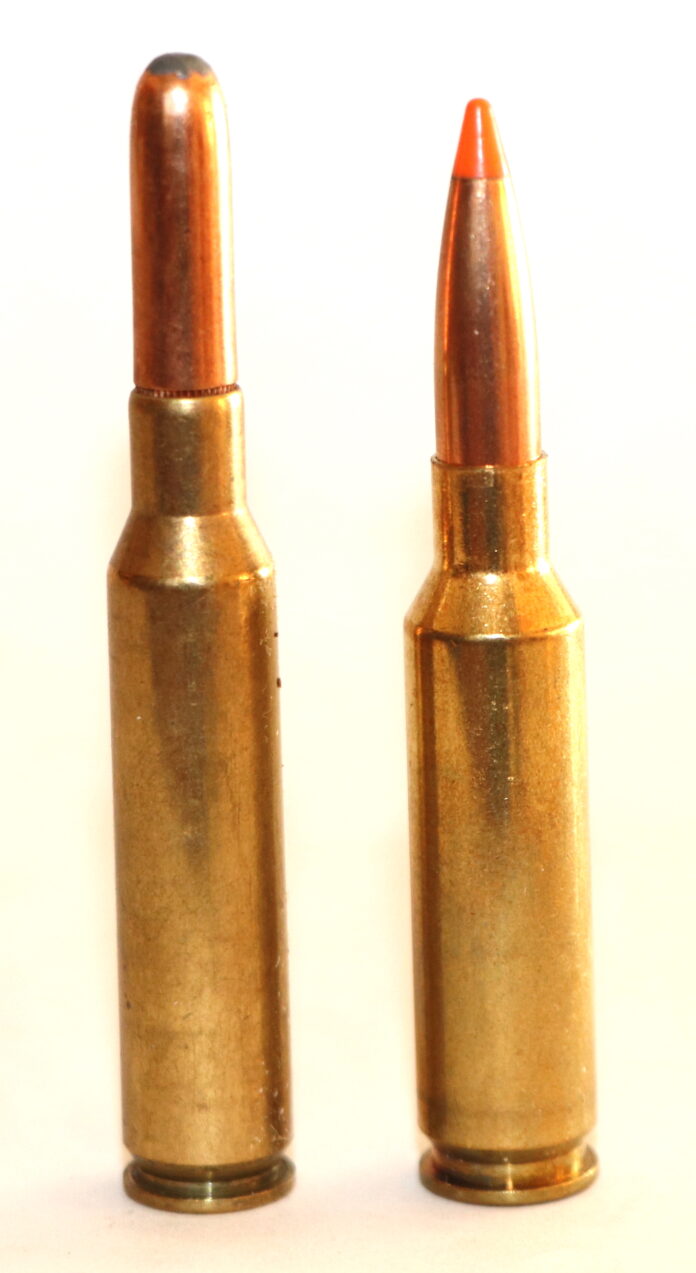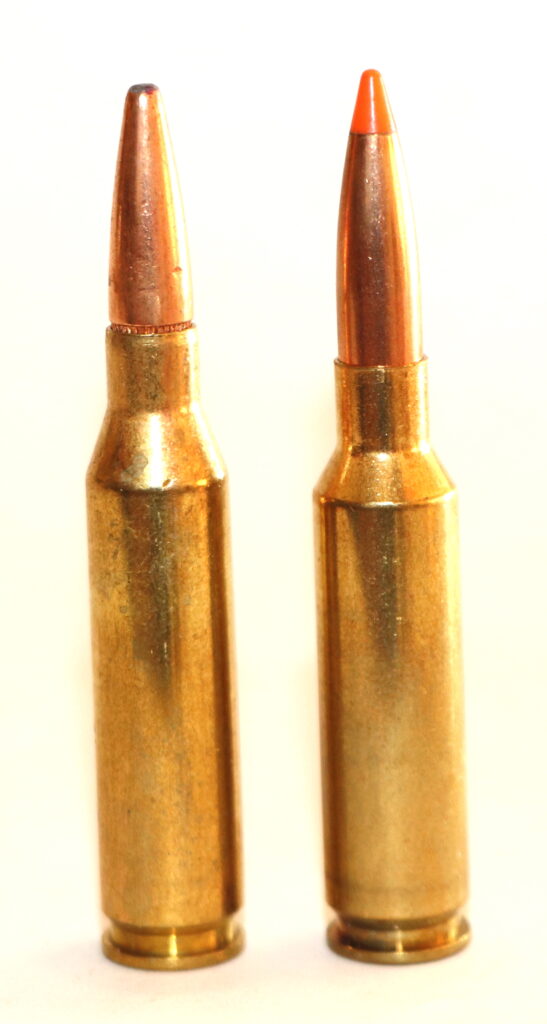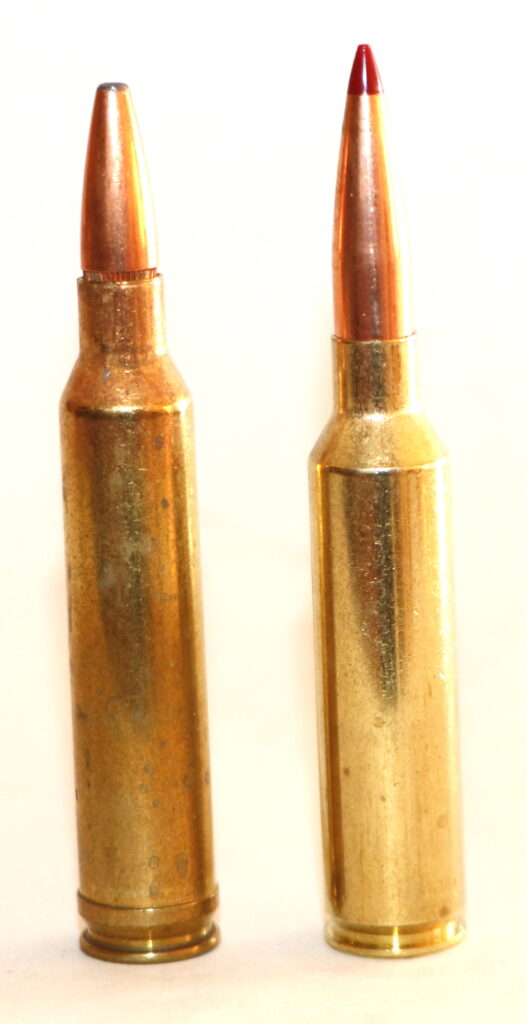
BY STEVE COMUS
The trend toward long-range shooting has been leaving many shooters scratching their heads, trying to understand what it is all about. There is no mystery, but it does require looking at things from a different angle.
The new long-range cartridges and rifles to shoot them are real and at least generally they deliver what they promise.
But there is no free lunch, so the way they achieve their performance involves using longer and heavier-for-bore streamlined bullets through barrels that have longer than traditional free bore-for-caliber and rifling that is faster than what had been normal.
The free bore is the part of the barrel between the mouth of the cartridge case and the beginning of the rifling lands (with a slight tapered leade that leads into the rifling). The lands are the spiraling part of rifling that squeeze the bullet and leave the engraved marking on fired bullets.
At the base of the lands is the groove, which is the same dimension as the bullet itself.
The idea behind contemporary long-range bullets is that because they are heavier for bore and more aerodynamic, they carry out there better, due to a combination of momentum and lower resistance. The level of aerodynamic is called ballistic coefficient.
It all boils down to fluid dynamics because air is a fluid. Hence, the higher the ballistic coefficient, the easier the bullet flies through the air.
Higher ballistic coefficients are achieved by changing the shape of the ogive (the part of the bullet from the tip to the bearing surface) and the shape of the bottom of the bullet – boattail when it comes to long-range bullets (the part of the back of the bullet that tapers down from the full diameter of the shank).
Because the heavier bullets are longer, they have to have a higher rate of spin, which means a faster rifling twist. For example, at a given velocity, it takes a faster twist to stabilize a longer bullet than a shorter one.
Longer, heavier bullets, when seated into the cartridge case far enough to be used in barrels with the traditional amount of free bore take up powder space in the case. But by having more free bore, the bullet can be seated out farther, which means there is room for more powder.
All of this is more or less academic if the rifle doesn’t shoot extremely accurately and if the bullets, powder and primers are not consistent.

That’s the biggest reason that the long-range rage is happening now – computerized manufacturing processes coupled with improved metallurgy and advanced synthetics as well as advancements in powder have all come together to make both rifles and ammunition truly high-performance.
But for longer range hunting, there is still another matter that has needed to be addressed, and that is the terminal performance of the bullets. It doesn’t do any good to hit a game animal if the bullet fails at or after impact.
Bullet makers have been able to make very accurate bullets for some time. And, they have been able to make bullets that perform well at a given distance for decades. But until the digital/computer age, they were not able to make bullets that are accurate and perform well over significantly varied distances.
For example, it’s not difficult to design a hunting bullet that performs properly at short distances and it’s not too hard to design a hunting bullet that performs well at both close and medium distances. But to design a bullet that will work well from the end of the barrel to several hundred yards has been a true challenge.
Classic hunting bullets were termed “cup and core” where the cup was copper, and the core was lead. Those two components were swaged together to form the bullet.
Evolutionary steps then saw the bullet makers design projectiles that would open up well yet retain enough mass to keep the remainder of the bullet penetrating.
Then, with the advent of social environmental policing, there were calls for lead-fee bullets. Barnes Bullets in Utah answered that with their X-Bullet, which is all-copper. Since then, there have been number of other lead-free bullets designed.
Such bullets are necessarily more expensive to make than traditional bullets and the road to acceptable performance was anything but quick and easy.
At first, the copper alloy was soft, which tended to copper-foul barrels quickly – especially when shot from high-pressure, high-velocity cartridges. This was addressed by making an alloy that was hard enough to minimize fouling.

And initially, the all-copper bullets might shoot accurately in one individual barrel but be very inaccurate in another individual barrel. This was addressed via the use of bands along the bearing surface of the bullet.
Then there was the matter of terminal performance. The hollow point at the nose of the bullet and the hollowed-out area in the inside front part of the bullet had to be designed so that the bullet would open up (mushroom) at various distances.
It took years to put all of those characteristics together to come up with a projectile that would work in all scenarios. In the process, all-copper bullets got a reputation for not working well, especially at the longer distances.
This and other characteristics of all-copper bullets tend to result in deeper penetration in the game animal. That’s good, but only to a point. If the bullet doesn’t open up enough, it can zip all the way through and out of the animal, not imparting as much energy into the animal.
So, choosing the right bullet for the conditions and game animal at hand can be complicated. Fortunately, bullet makers have come up with bullet models that perform at least well from short to long range.
Fortunately, manufacturers make such choices a bit easier by offering specific lines of component bullets or loaded ammunition designated as being longer range credible.
This means that the hunter must then match the bullet or load to his or her individual rifle for best results.



